This was published 8 years ago
Hallstatt and Upper Austria travel: The stunning place where Hitler grew up
Upper Austria was where Adolf Hitler grew up, amid picturesque lakeside villages. Daniel Scott explores this beautiful region.
By Daniel Scott
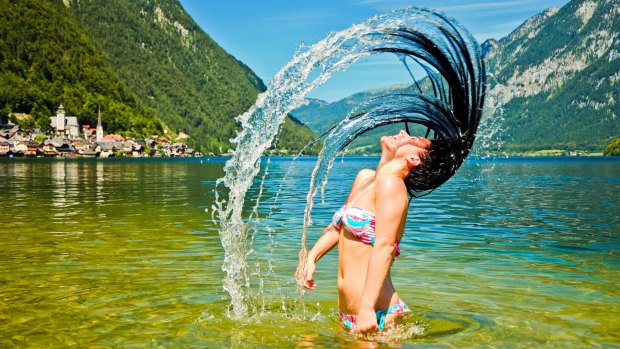
A dip in the clear waters of Lake Salzkammergut.Credit: iStock
You wouldn't imagine one of history's most demoniacal leaders growing up in this insanely beautiful region of lakes, mountains and rushing rivers. But it was here in Upper Austria, nudging both the Czech Republic and Germany to the north, that Adolf Hitler was born, in 1889, and where he spent much of his childhood.
There were few signs in Hitler's early life of what was to come. At school, near his family's farm at Lambach, he joined the choir and professed a desire to become a priest, and later, an artist. But, following his younger brother's death and his being sent away to school in the Upper Austrian capital Linz, in 1900, Hitler began to fester, quarrelling frequently with his father and teachers.
In an area where young people hated the ruling Habsburg dynasty and German nationalism was rapidly garnering support, Upper Austria was unknowingly nurturing one of the world's most hateful dictators.
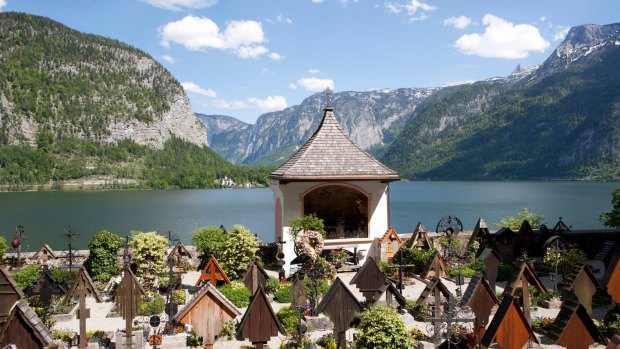
Lake Hallstatt is a UNESCO World Heritage Site.Credit: Alamy
Unsurprisingly, the region does not dwell on its association with Hitler and nor do visitors, given the flawless serenity of its historic villages and its natural scenery. In any case, modern Austria, like Germany, at the forefront of Europe's current refugee crisis, has emerged as one of the continent's most welcoming nations.
Nonetheless, it's while standing in World Heritage-listed Hallstatt, as picturesque a lakeside village as I've ever visited, that I think of Hitler. In front of me, in the charnel house of the parish church, are hundreds of human skulls, stacked on shelves above scores of neatly arranged femurs and tibias.
There's an innocent explanation for these bones, of course. They are the remains of villagers who couldn't bear to miss out on the lake and Alpine views that their now-empty eye-sockets seem trained upon.
Gustav Klimt's three most controversial works were destroyed by Hitler's SS.
It's a view shared with the adjacent graveyard, which for my money, rivals Sydney's Waverley cemetery, atop of the cliffs overlooking the Tasman Sea, for the world's best-appointed burial place. Some crosses above the gravestones here even have wooden roofs, ensuring the dead are forever at home.
You probably need a warped mind to think of Hitler and mass murder in Hallstatt, not merely one of Europe's most beautiful villages but one of its oldest settlements, with evidence of habitation going back 7000 years.
Hallstatt's also the site of the world's oldest salt mine, dating back to the Stone Age. At a time before refrigeration and canning, salt was like "white gold". Up until 1900, it was lugged to the village 500 metres below, 25 kilograms at a time, by female salt carriers.
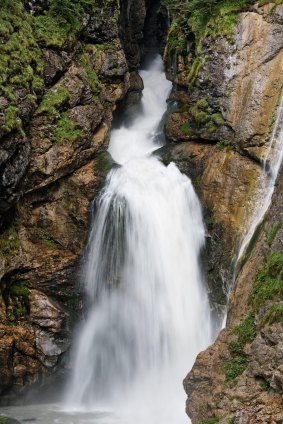
A torrent tumbles over the rocks at Waldbachstrub gorge, near Hallstatt.Credit: Alamy
Hallstatt is last fairytale village I visit on a two-day tour of Upper Austria. After winding into the mountains from its capital Linz, an industrial powerhouse ranged along the Danube, we base ourselves at a lovely hotel on the shores of Lake Attersee.
At 46 square kilometres, it is the region's largest lake, dropping down 171 metres in places. In a landlocked country, Attersee provides the optimum conditions for scuba diving, with 25-metre visibility and sites around the lake drawing enthusiasts from around Europe.
On our first day, we've been promised "a fun underwater adventure, hiking with your scuba mask" in nearby Weissenbachtal Valley, but a lack of rain renders the mountain river too shallow for snorkelling. We trek instead to a waterfall and douse ourselves under its icy gush.
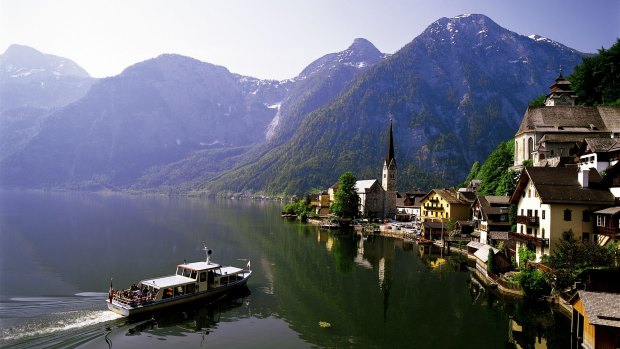
Hallstatt village sits on the stunning lake Salzkammergut.Credit: Alamy
Back at the lake, in another comely waterside town, Kammer-Schoerfling, we visit the Gustav Klimt Centre. Detailing the artist's summers spent at Lake Attersee, between 1900 and 1916, the museum exhibits how Klimt captured its essence on canvas. Regarded as one of the founders of modern art, Klimt's paintings have fetched up to $US135 million, and this latter period at Attersee is seen as having parallel significance to his work as Monet's Giverny and Cezanne's Provence.
It is perhaps significant that Klimt's three most controversial works, Philosophy, Medicine and Jurisprudence, considered pornographic when first exhibited, were destroyed by Hitler's SS as they fled Vienna, in May 1945. For, while Upper Austria bred at least one creative visionary, it fostered another human fixated on mass destruction.
Yet, taking a cruise later that day on Lake Attersee, with the sun dropping behind the mountains on one side and a bright oval moon rising above slate-grey peaks on the other, my strongest memories are of Upper Austria's exquisite beauty and the artistic genius whose longing for it kept drawing him back.
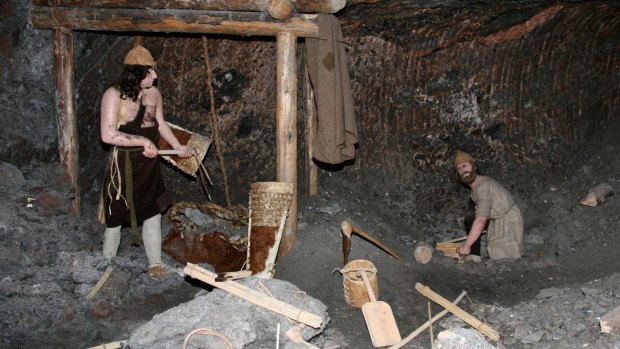
A display of primitive miners working in a salt mine.Credit: Alamy
TRIP NOTES
MORE INFORMATION
GETTING THERE
Qantas and partners fly from Sydney and Melbourne to Vienna from $1800 return; see qantas.com.au.
Trains run regularly from Vienna to Linz, with onward connections from the Upper Austrian capital; see oebb.at/en/.
STAYING THERE
The 4-star Hotel Attersee, in Seewalchen am Attersee, has rooms overlooking the lake from €75 ($114); see hotelattersee.com.
TOURING THERE
Gustav Klimt Centre, Kammer-Schoerfling, opens April to late October from 10am to 5pm, entry is €5 ($7.35); see klimt-am-attersee.at.
Daniel Scott was a guest of the Austrian National Tourist Office.
Sign up for the Traveller Deals newsletter
Get exclusive travel deals delivered straight to your inbox. Sign up now.